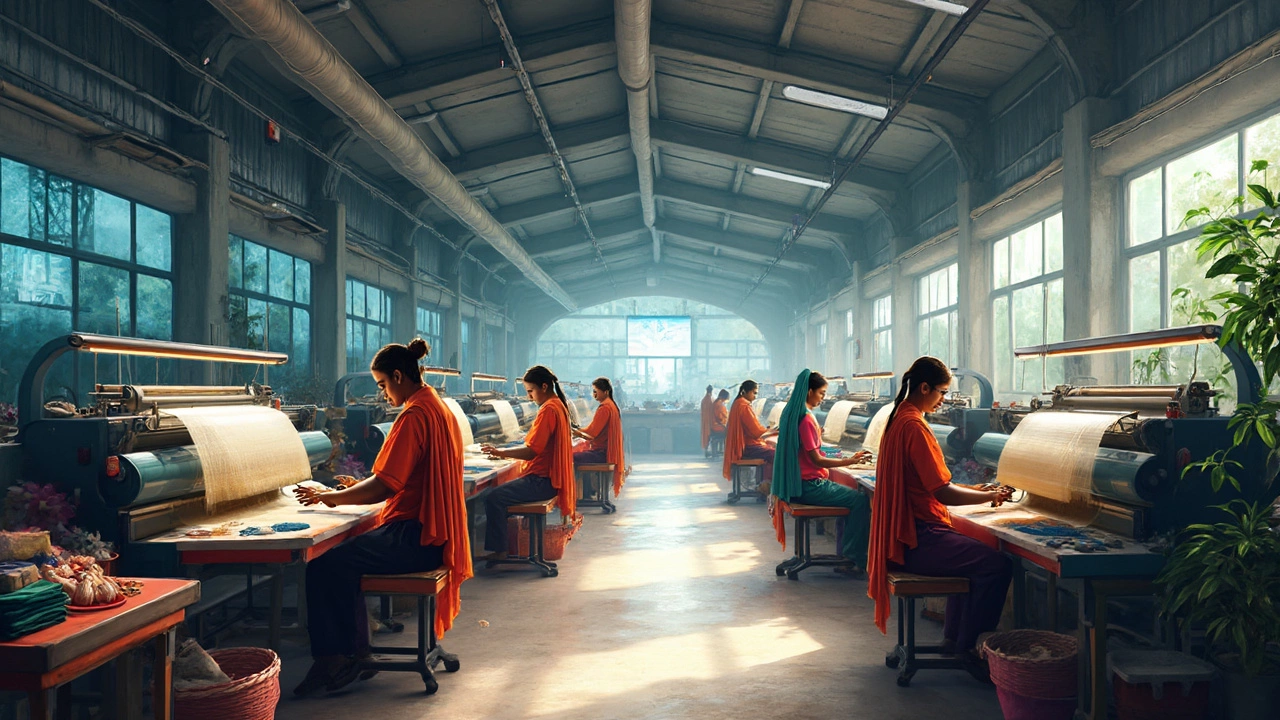Indian Textile Trends: What’s Hot in 2025
India’s textile scene is buzzing with fresh ideas and old tricks getting a modern twist. If you’re wondering why fabrics from Gujarat, Tamil Nadu or Delhi are suddenly on everyone’s radar, you’re in the right place. Below we break down the forces that are pushing the industry forward and show you how to ride the wave.
Sectors Driving Change
First up, sustainability. Brands are swapping polyester for organic cotton, linen and recycled fibers because buyers care about the planet. The government’s push for “Make in India” cotton farms means cheaper, locally sourced material and less carbon footprint. Next, digital printing is cutting lead times dramatically. A designer can upload a pattern and see it on silk or khadi within a day, cutting waste and boosting creativity.
Regional weaves are also getting a makeover. Traditional handloom techniques from Banaras and Kanchipuram are being paired with modern cuts, creating a hybrid look that appeals to both heritage lovers and fashion‑forward shoppers. This fusion is driving export growth – the U.S. and EU markets are paying top dollar for authentic yet contemporary Indian textiles.
How to Stay Ahead
For manufacturers, investing in air‑control technology can be a game‑changer. Consistent humidity and temperature improve yarn quality and lower defect rates, especially for fine silk and synthetic blends. Small outfits can start with compact, energy‑efficient systems that fit in a 200‑sq‑ft workshop.
Keep an eye on policy shifts. Recent tax incentives for eco‑friendly production and subsidies for digital looms lower the cost barrier for tech upgrades. Join industry webinars or local trade bodies to catch announcements early – the sooner you adapt, the bigger the margin.
Finally, think globally but act locally. Source raw cotton from nearby farms, partner with regional designers, and use digital platforms to showcase your collection to overseas buyers. A simple Instagram reel of a hand‑loom process can attract orders from boutique stores in London or New York.
In short, Indian textile trends are a mix of green materials, high‑speed printing, heritage revival and smart factory upgrades. Embrace these moves, stay flexible, and you’ll find the market rewarding you with more sales, better margins and a bigger reputation on the world stage.

Textile Industry Outlook 2024: What's Really Shaping Indian Textile Manufacturers?
India's textile industry in 2024 is running at a different pace with global trends shaking things up. Domestic demand is ticking up, and export numbers are shifting, but labor, costs, and new technology are changing the game for manufacturers. Sustainability isn't just a buzzword—buyers are demanding proof. This article lays out the raw facts, industry shifts, and tips for textile manufacturers in India looking to stay ahead. Get a fresh look at what's actually driving the future of Indian textiles.
